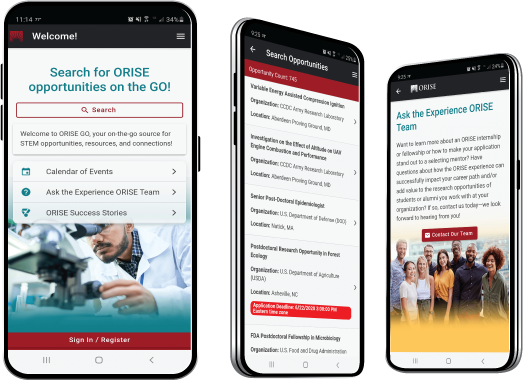2D materials for ultra-low-power data egress at 4K
Create and release your Profile on Zintellect – Postdoctoral applicants must create an account and complete a profile in the on-line application system. Please note: your resume/CV may not exceed 2 pages.
Complete your application – Enter the rest of the information required for the IC Postdoc Program Research Opportunity. The application itself contains detailed instructions for each one of these components: availability, citizenship, transcripts, dissertation abstract, publication and presentation plan, and information about your Research Advisor co-applicant.
Additional information about the IC Postdoctoral Research Fellowship Program is available on the program website located at: https://orau.org/icpostdoc/.
If you have questions, send an email to ICPostdoc@orau.org. Please include the reference code for this opportunity in your email.
Research Topic Description, including Problem Statement:
Cryogenic logic based on superconducting circuits is a promising approach to next generation high performance computing. A primary challenge to a future superconducting data processor is the availability of an energy-efficient high-data-rate interconnect between the superconducting chips at 4K and the room temperature control system. The ideal data egress system would require dissipation of no more than a few tens of attojoules in the 4K environment to convert single flux quantum (SFQ) information into a form that can be transmitted to room temperature. The superconducting system represents digital zeros and ones by either the absence or presence of a SFQ. SFQ circuits produce voltage pulses that are about 1 mV tall and 2 picoseconds wide although this output can be conditioned to make it more suitable for photonic devices. This topic seeks to investigate 2D materials at a fundamental physics level for their promise as energy-efficient high-data-rate electro-optic modulators or other manifestations of data egress devices from 4K. Graphene, for example, has been explored for ultra-low-loss and high bandwidth modulation (e.g., [1]). Newer 2D materials such as molybdenum ditelluride [2] and black phosphorous also show promise in the optical domain. Some of these new 2D materials can be doped directly via electrostatic gating allowing p and n regimes to be created by control pulses, where needed. Such unique properties of 2D materials may enable new functionality of data modulation and communication, especially at cold temperatures.
[1] Phare, Christopher T., Yoon-Ho Daniel Lee, Jaime Cardenas, and Michal Lipson, “Graphene electro-optic modulator with 30 GHz bandwidth”, Nature Photonics 9 (2015): 511.
[2] Ya-Qing Bie, et al., “A MoTe2-based light-emitting diode and photodetector for silicon photonic integrated circuits”, Nature Nanotechnology, doi: 10.1038/nnano.2017.209.
Example Approaches:
The aim of this research is to experimentally advance the understanding of 2D materials for applications in data communication, particularly energy efficient, high-data-rate communication from a 4K environment to room temperature. Proposals could focus on experimental aspects of 2D materials and their relevance to ultra-low-power data egress at 4K address and one or more of the following questions or goals:
-
Can 2D materials offer unique advantages to the creation of energy efficient and high-data-rate electro-optic modulators?
-
Can 2D be integrated with silicon photonics and superconducting circuits?
-
Does operation at 4K offer new properties which can be taken advantage of? Or, is there a no-go to 4K operation?
-
Is there a fundamental limit to the energy per bit in these systems?
-
Do any properties of novel 2D materials allow direct transduction of data from SFQ pulses to optical information without the need for pulse conditioning?
-
Besides electro-optic modulation, does the physics of a 2D material allow other novel forms of data egress?
Postdoc Eligibility
- U.S. citizens only
- Ph.D. in a relevant field must be completed before beginning the appointment and within five years of the application deadline
- Proposal must be associated with an accredited U.S. university, college, or U.S. government laboratory
- Eligible candidates may only receive one award from the IC Postdoctoral Research Fellowship Program.
Research Advisor Eligibility
- Must be an employee of an accredited U.S. university, college or U.S. government laboratory
- Are not required to be U.S. citizens
- Citizenship: U.S. Citizen Only
- Degree: Doctoral Degree.
-
Discipline(s):
- Chemistry and Materials Sciences (12 )
- Communications and Graphics Design (6 )
- Computer, Information, and Data Sciences (16 )
- Earth and Geosciences (21 )
- Engineering (27 )
- Environmental and Marine Sciences (14 )
- Life Health and Medical Sciences (45 )
- Mathematics and Statistics (10 )
- Other Non-Science & Engineering (5 )
- Physics (16 )
- Science & Engineering-related (1 )
- Social and Behavioral Sciences (28 )

 ORISE GO
ORISE GO

The ORISE GO mobile app helps you stay engaged, connected and informed during your ORISE experience – from application, to offer, through your appointment and even as an ORISE alum!





